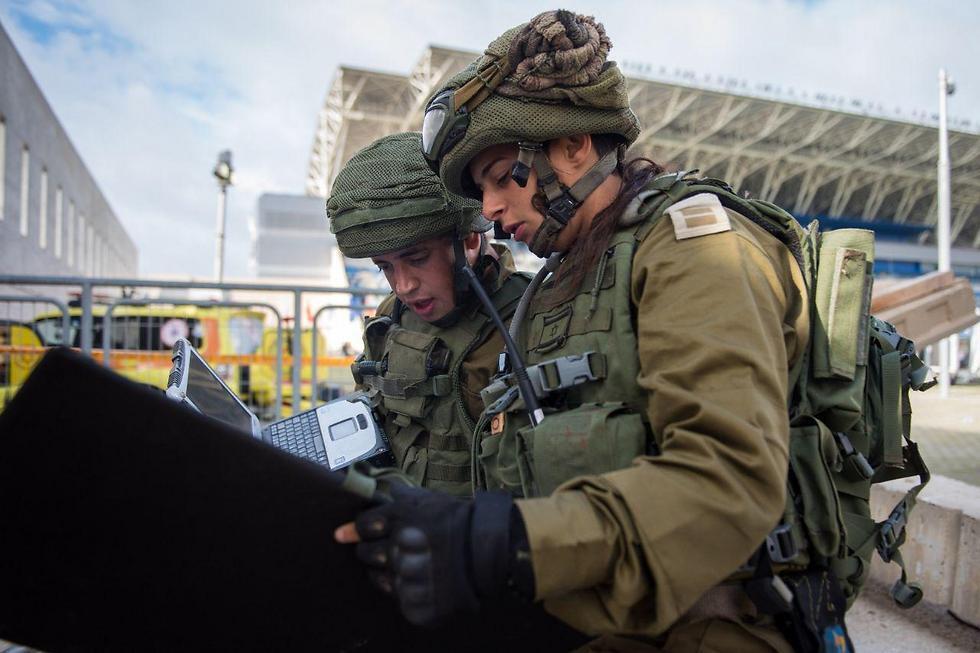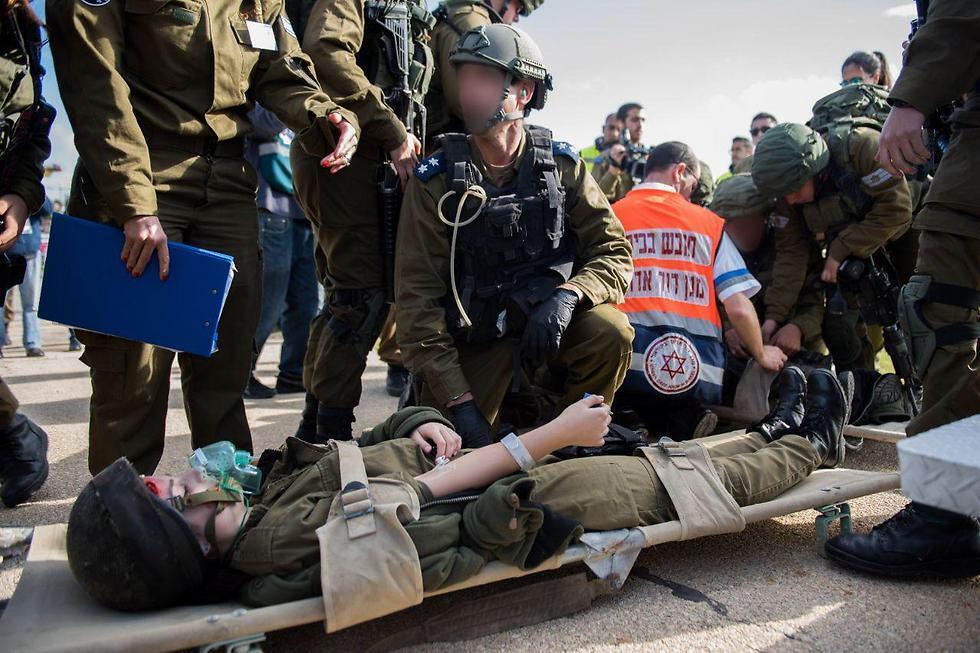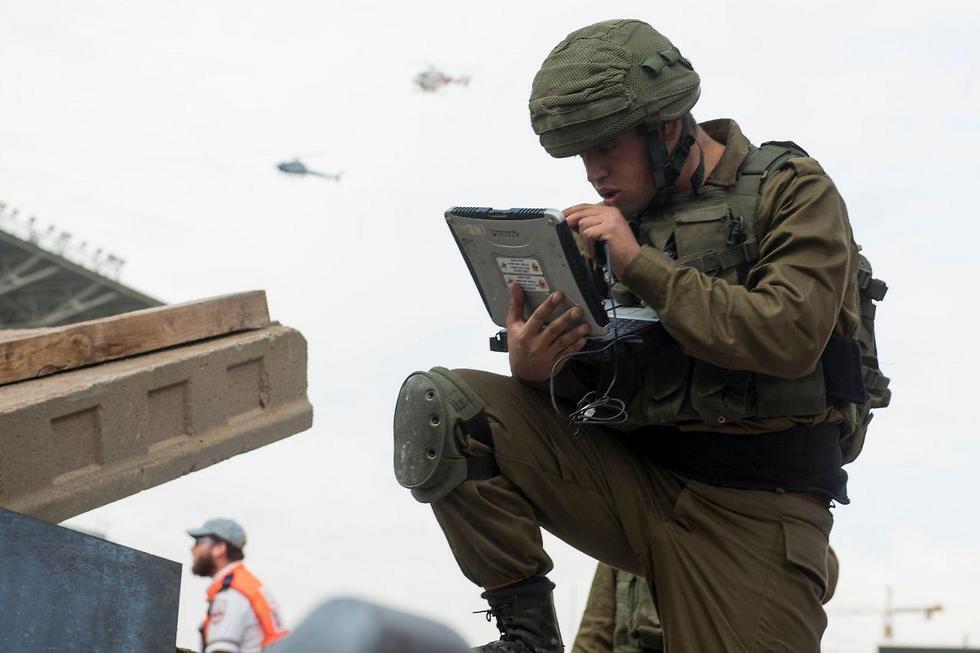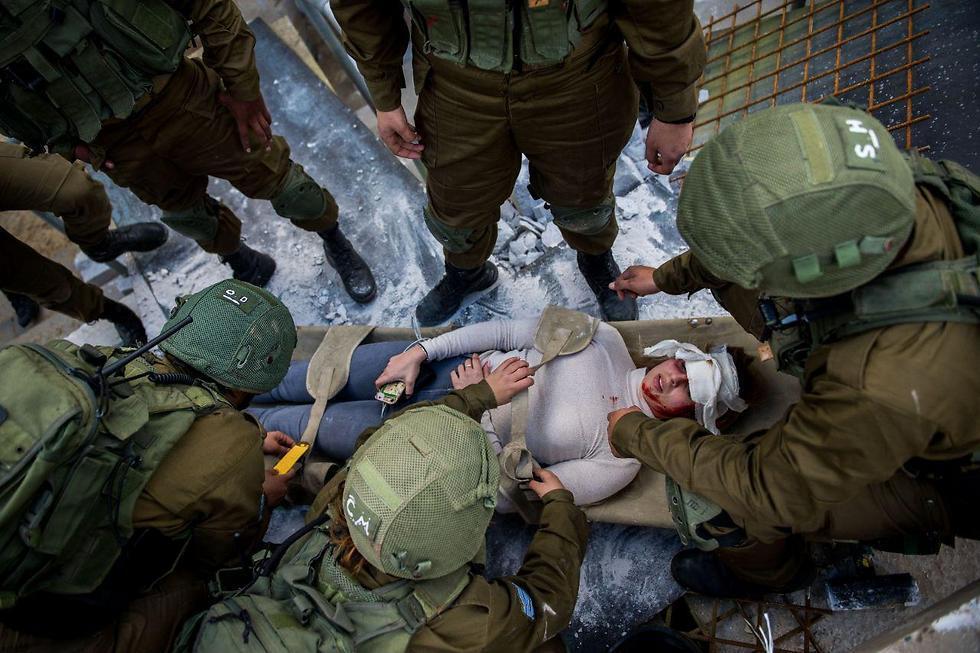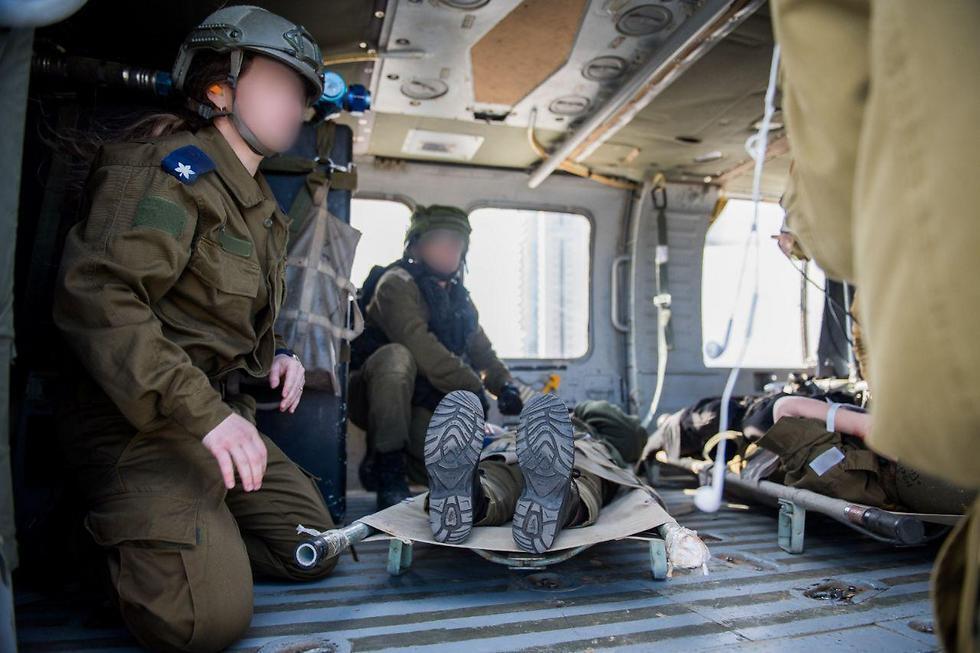Getting your Trinity Audio player ready...
A training drill for military and emergency services was held Wednesday at the Moshava Stadium in Petah Tikva, simulating a mass terrorist attack causing one of the stands to collapse as a result of an explosion during a soccer game and leading to more than 200 casualties, including dozens of people killed.
The exercise simulated an attach during which multiple assailants carry out a combined attack including setting off explosive devices that cause one of the stands to collapse, snipers firing on the crowd of fans and knife stabbings in the midst of the confusion.
Footage from Wednesday's mass drill
(צילום: דובר צה"ל)
The actual event serving as inspiration for the drill was the November 2015 attacks in Paris—a combined attack by the Islamic State that claimed the lives of some 130 people, dozens of them in the Bataclan club during a rock performance.
A simultaneous drill simulating another terrorist attack was held in the city's market. Hundreds of first responders were roused to the scene, from Magen David Adom (MDA), the Israel Police, firefighting services, members of the Oketz special canine unit and Home Front Command rescue teams.
The forces arrived on the scene in less than thirty minutes, after being called away during training the Tzrifin base.
Police, MDA and air force helicopters also participated, airlifting the simulated victims to the city's Beilinson Hospital at the Rabin Medical Center, where the second phase of the drill began—a quick and efficient patient sorting process and life-saving treatment on the mass of wounded victims the medical center was inundated with.
Of the 200 simulated casualties, 12 percent were declared killed on-site, 12 percent in serious condition, 25 percent in moderate condition and the remaining either lightly wounded or suffering from mental distress. In addition, 50 percent of the victims were said to require emergency evacuation. The simulated injuries included shrapnel, shockwave, shooting and stabbing wounds.
Wednesday's exceedingly expansive exercise was spearheaded by Home Front Command and the Ministry of Health and was the culmination of an international conference hosted by the two entities this week on emergency and rescue services' response to large-scale disasters.
The conference, held in a Tel Aviv hotel, was attended by some one thousand doctors, scientists and rescue services representatives from 35 countries, including the United States, Germany, Spain, Italy, China and others.
According to military sources who participated in the drill, the biggest difficulty such forces may encounter in a real attack has to do with control and command over scene in the first few minutes following the attack. Another significant challenge is coordination between the disparate forces, considering the amount of people involved and the closed space.
Col. Dr. Olga Poliakov, head of Home Front Command's medical wing, told Ynet, "Integrating and controlling all of the forces involved, including enter a scene not yet neutralized of threats, was a focal point of the drill."
"In such an event, police needs to restore order while MDA is in charge of evacuating and treating any casualties, but when it turns from a mass-casualty incident into a mega mass-casualty incident—we first call in all forces and then control is handed over to a national command center, where we are," she explained.
In order to make Wednesday's drill more challenging, some of the rescue services personnel themselves simulated injuries sustained during the attack. An MDA paramedic, for instance, was wounded by terrorists' gunfire as the forces were setting up an initial sorting point for the many victims.
The emergency medical teams then had to decide who to evacuate first, and it was decided to initially removed people who suffered moderate to serious wounds, whose evacuation was deemed necessary to save their lives.
The second evacuation will then include those who suffered from distress, the lightly and mortally wounded and those killed.
The army's Medical Corps has recently changed its terminology for sorting through wounded, with victims not declared moderately or seriously wounded unless they are urgently evacuated, with the rationale being that patients' status tends to change en-route to the hospital, which is supposed to ascertain the status after a round of examinations.
Col. Poliakov added, "Almost nowhere else in the world is the army involved in preparing civilian health systems to such an extent for an event like this. That's exactly what our colleagues from abroad are here to study, in the conference in general and especially in the drill."
Lieutenant Yoav Sasson, a company commander from Home Front Command's Kedem battalion ,was one of the first to arrive with his team to the scene, as part of 'round the clock preparedness of regular Home Front Command forces nationwide.
"The initial report we received spoke of a collapsed stand and fans trapped underneath it alive" Sasson said. "We then endeavored initially to locate and extract those trapped, and heard gunfire from the outer ring of the scene as we did."
"Our soldiers always arrive equipped with weapons and a full combat vest, in preparedness for under-fire extraction. During routine operations, we're deployed in Judea and Samaria operational sectors," he added. "We are required to exert command and control over complex event such as today's, and to function under pressure and under fire."





